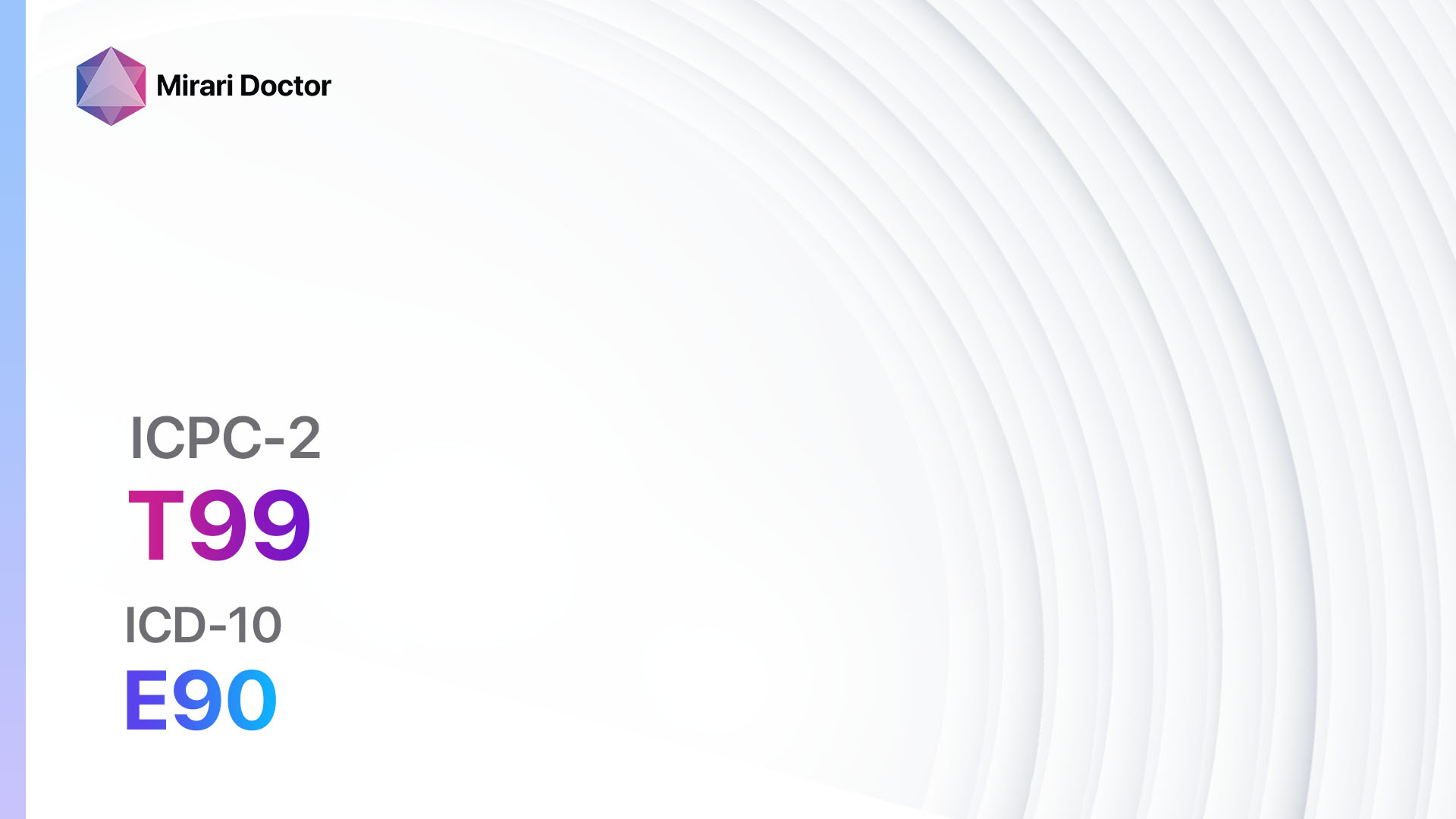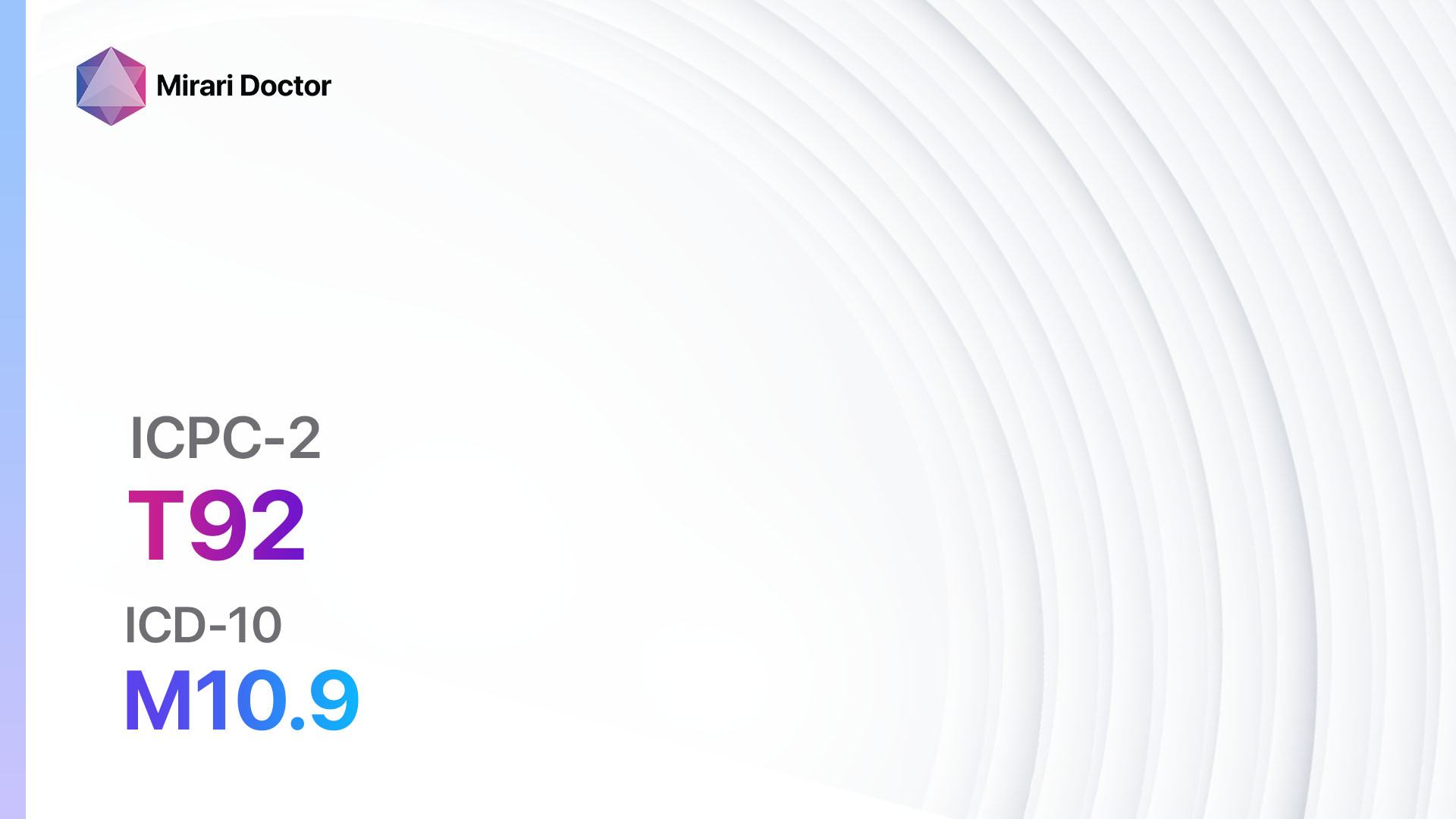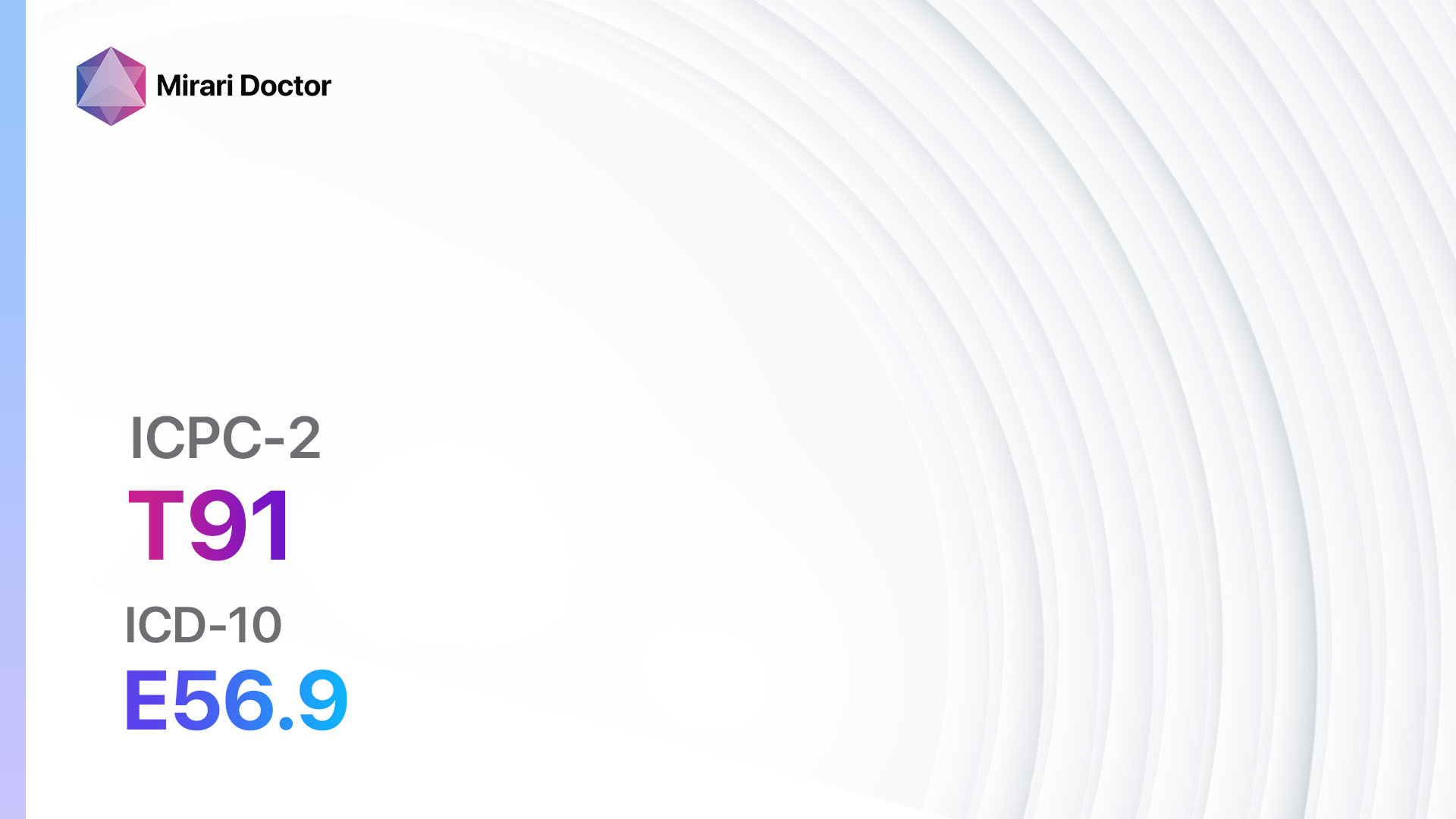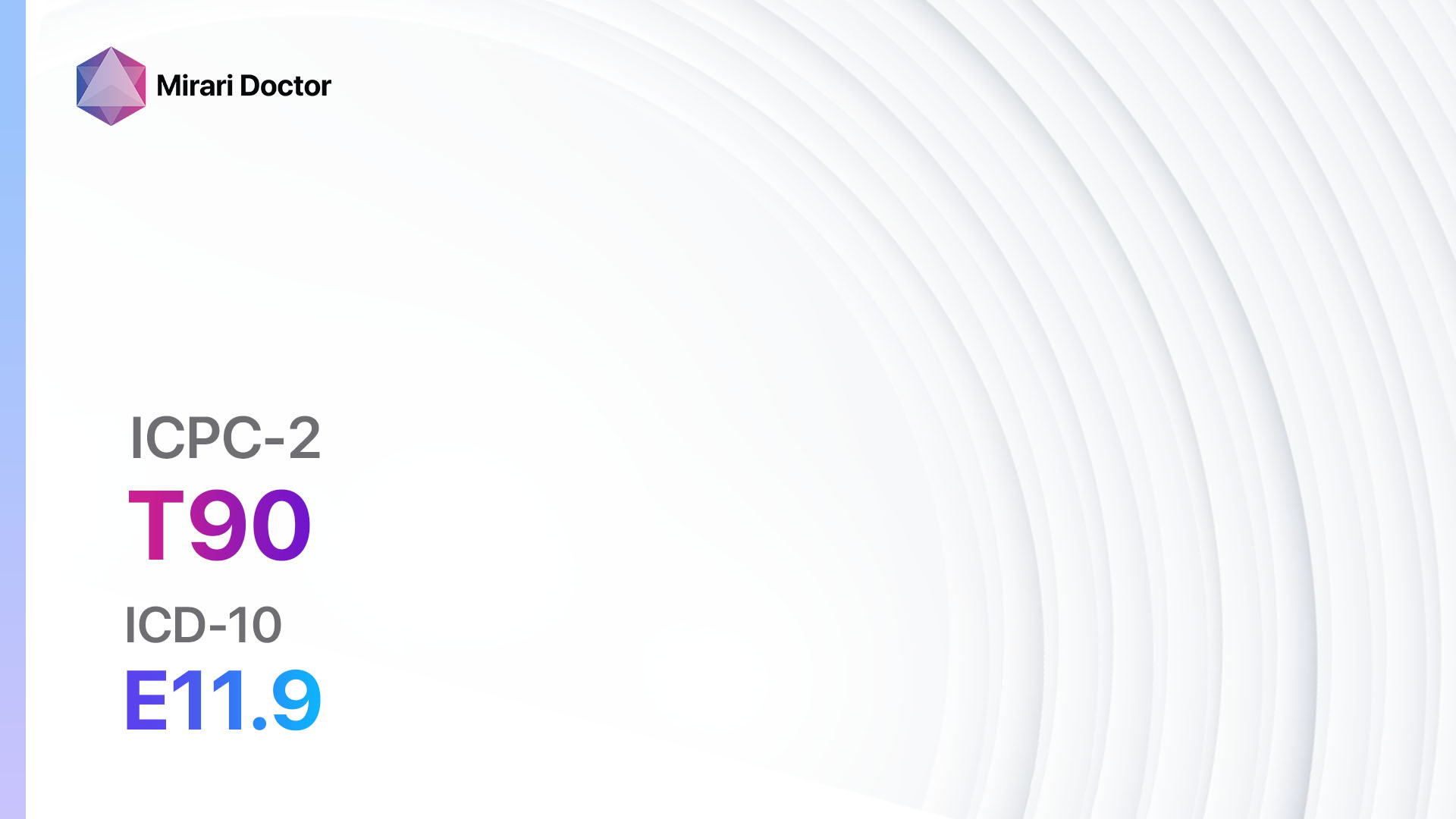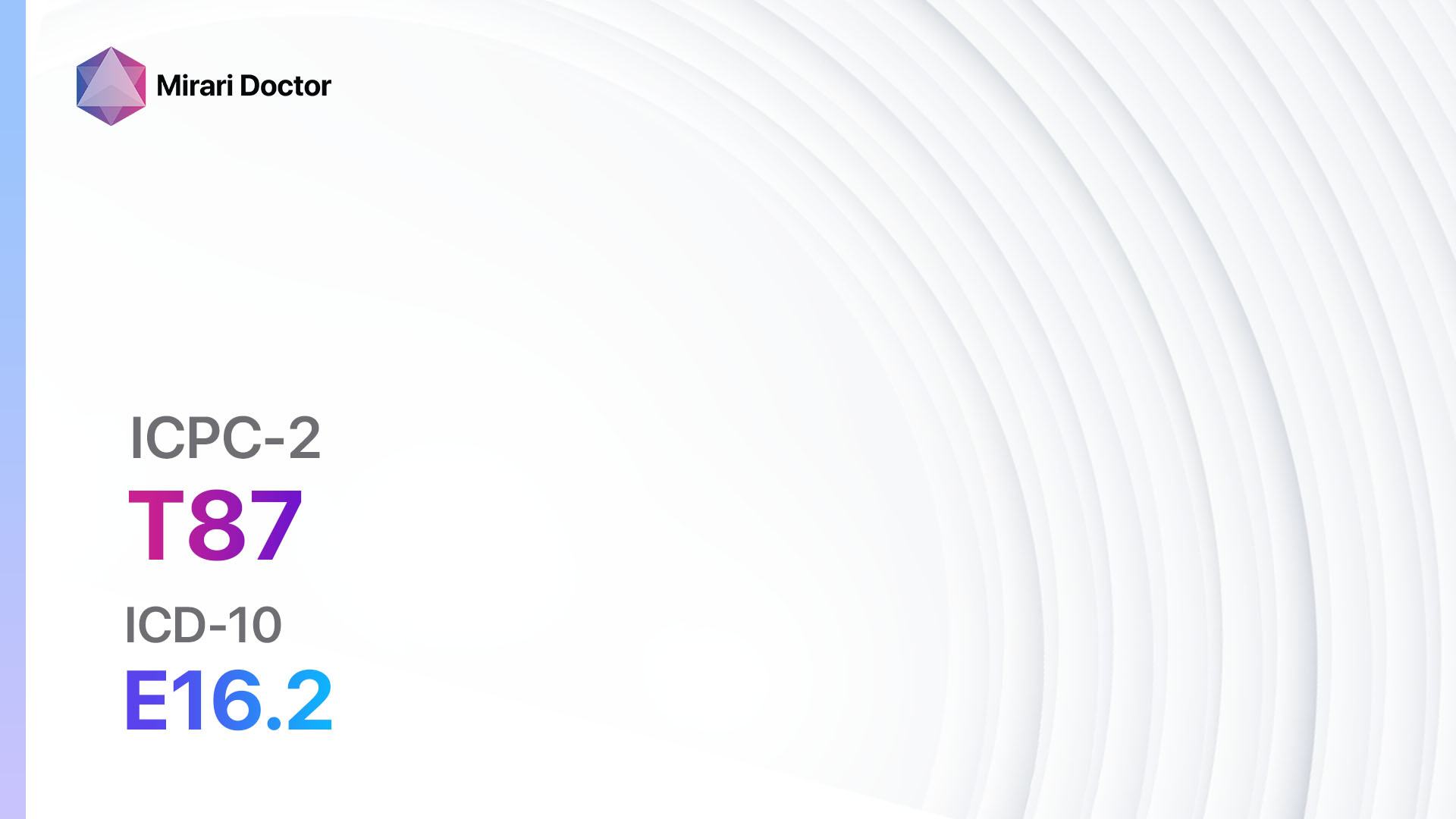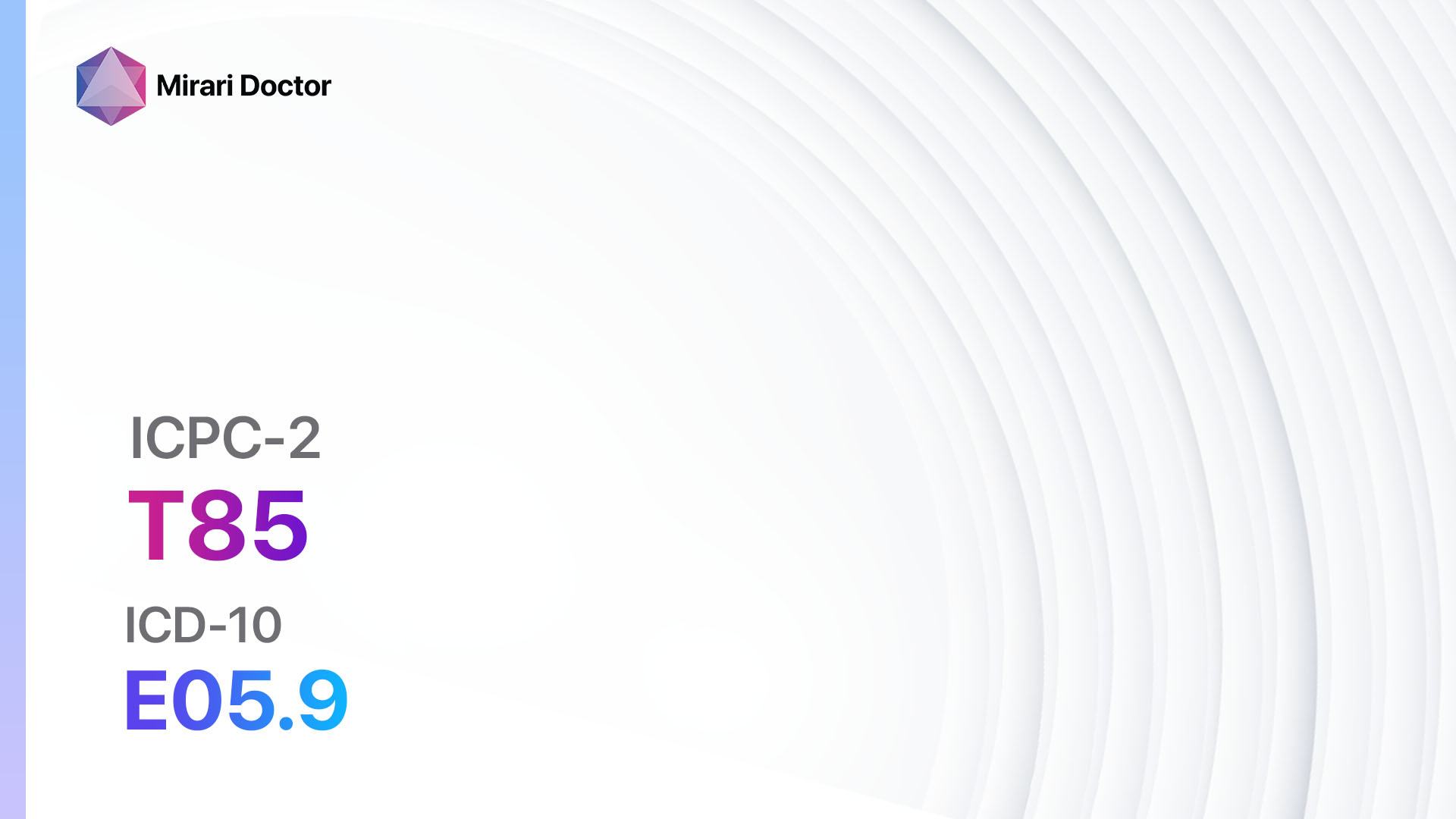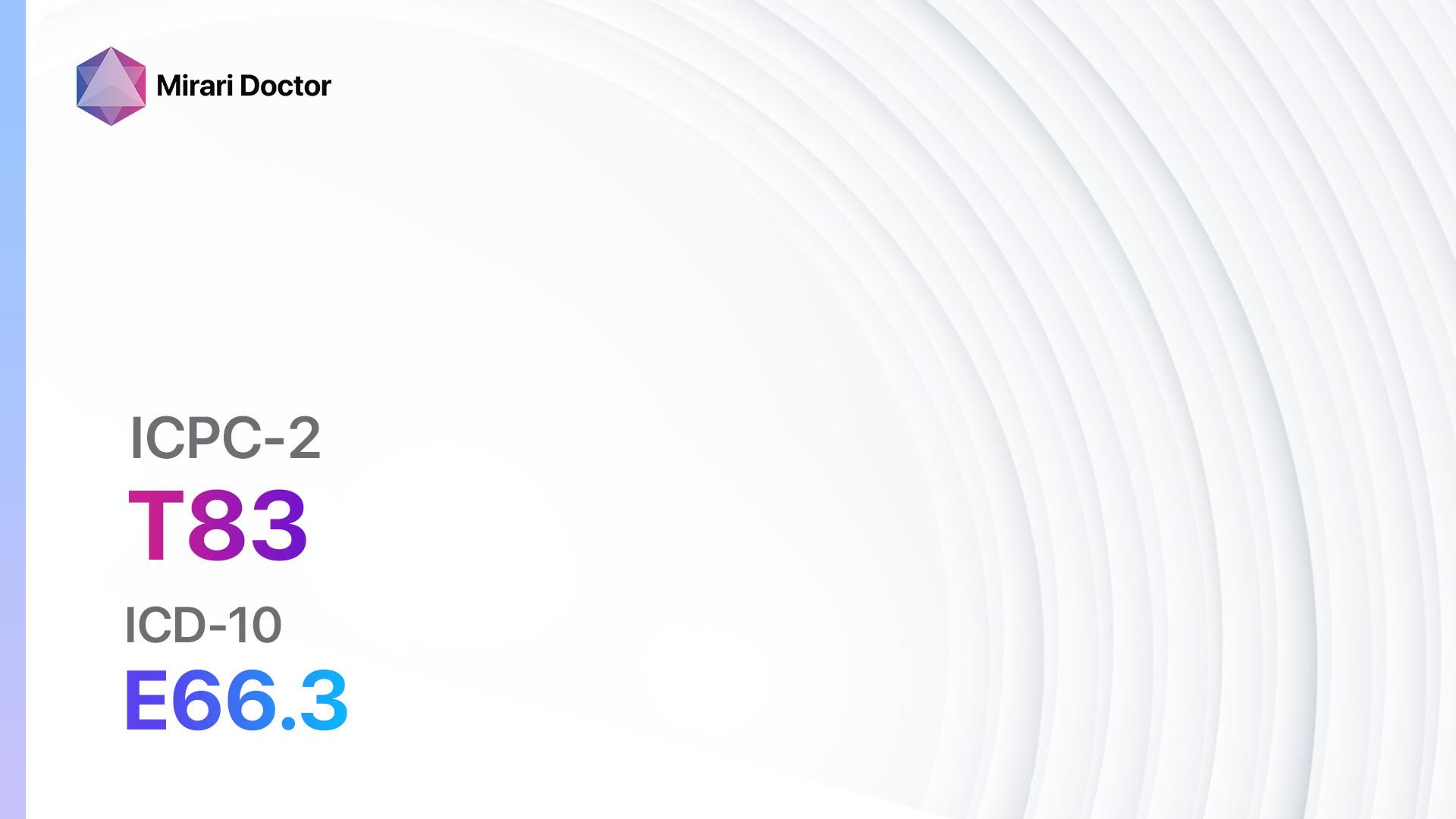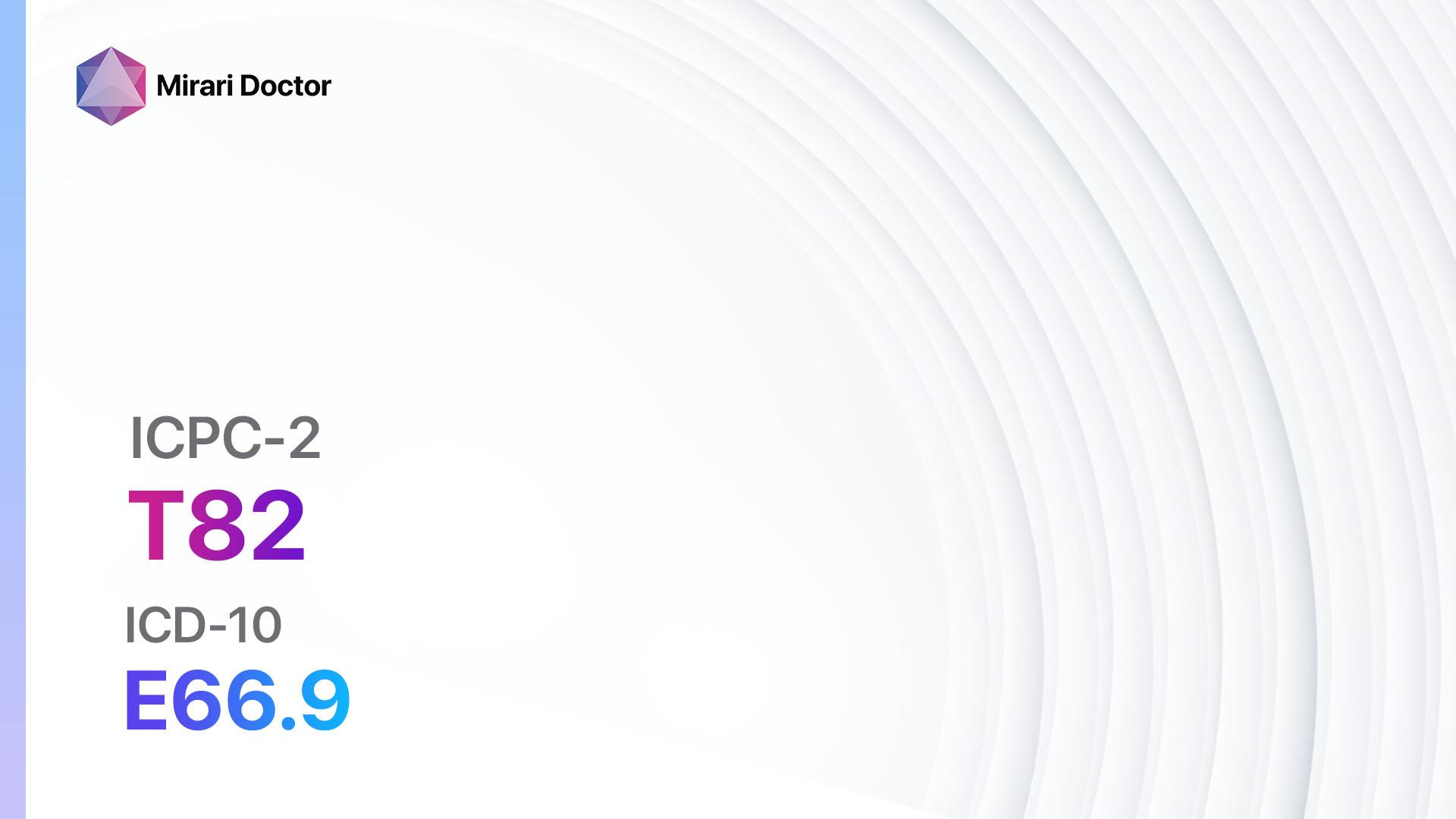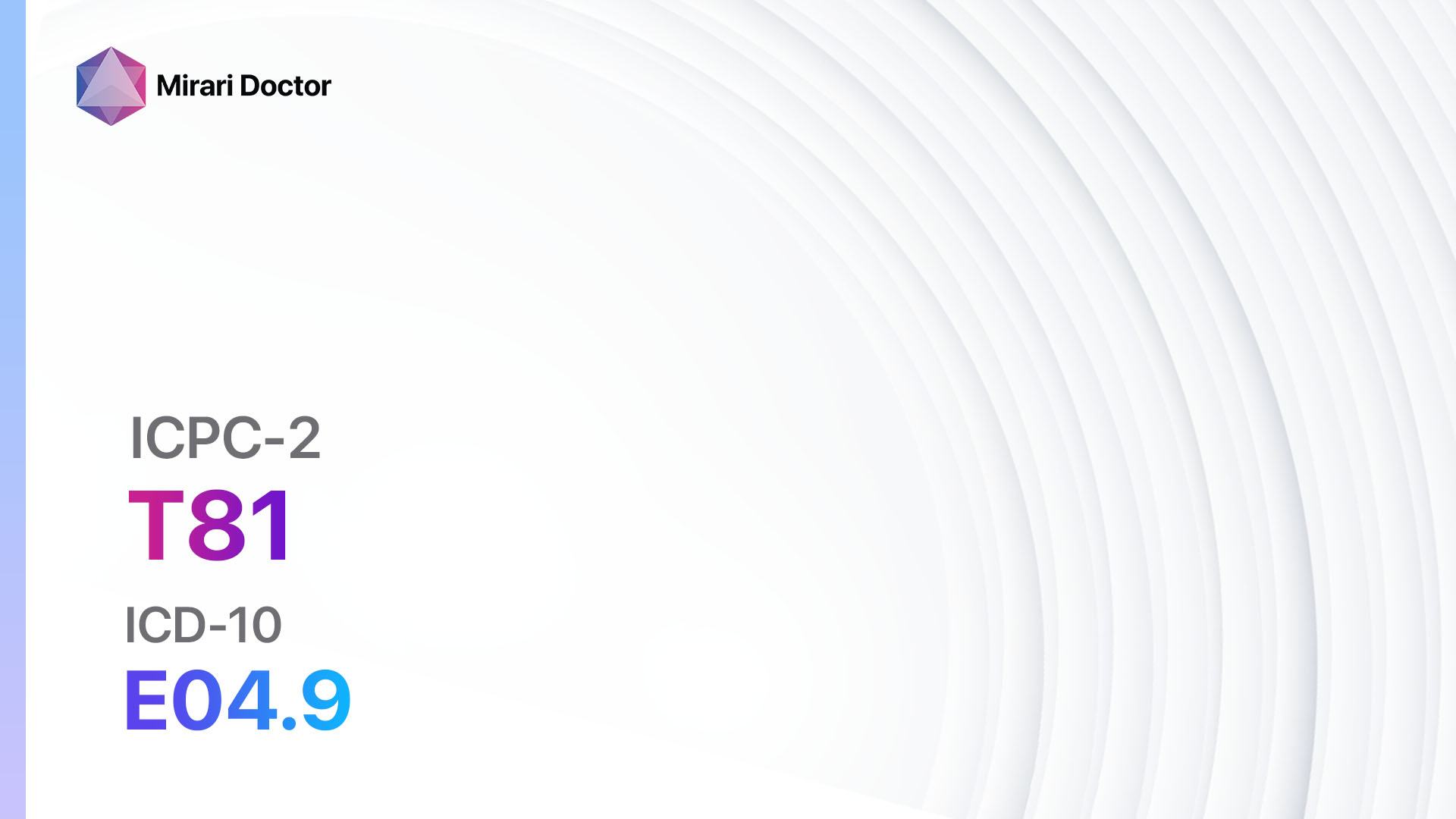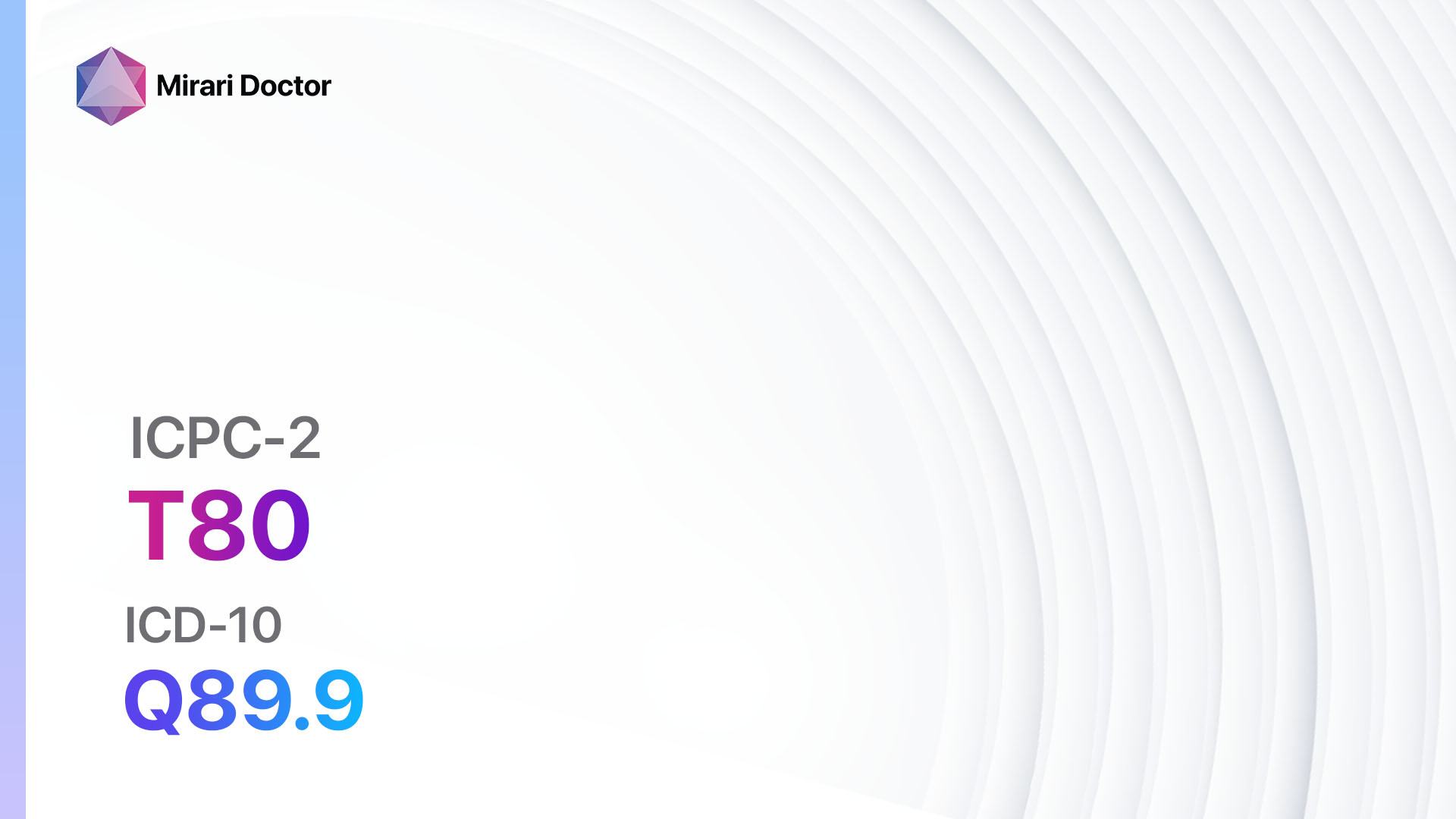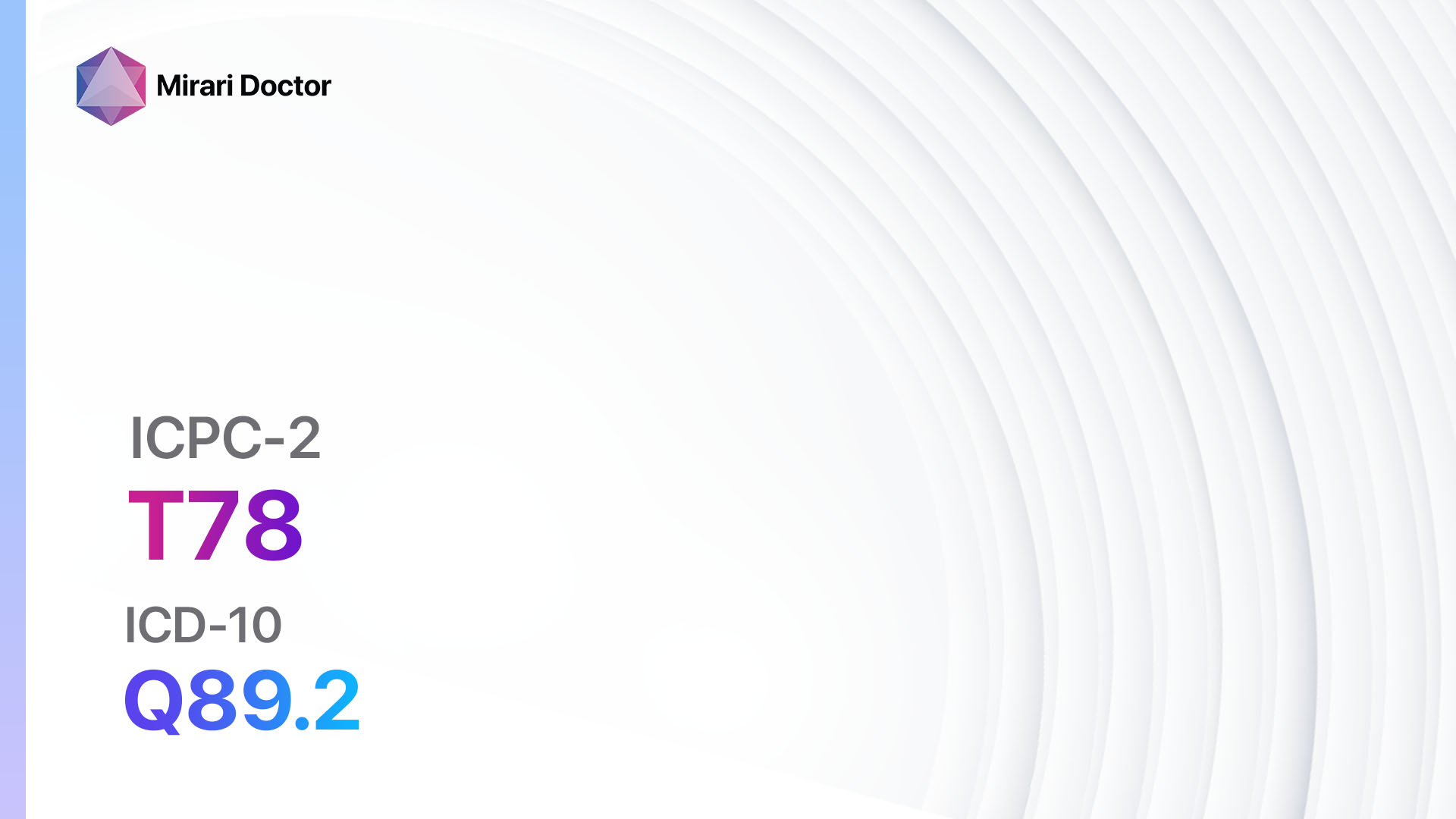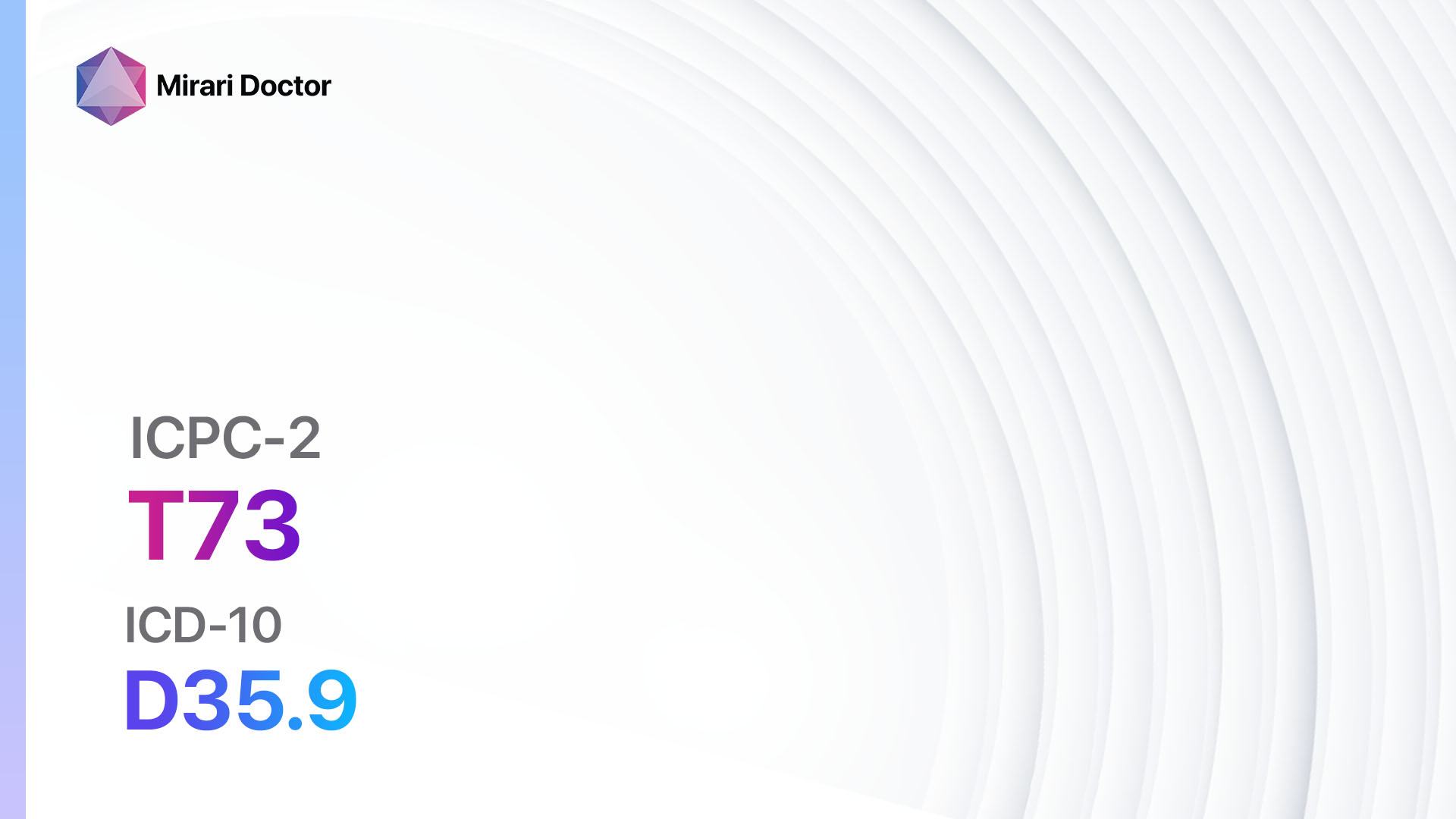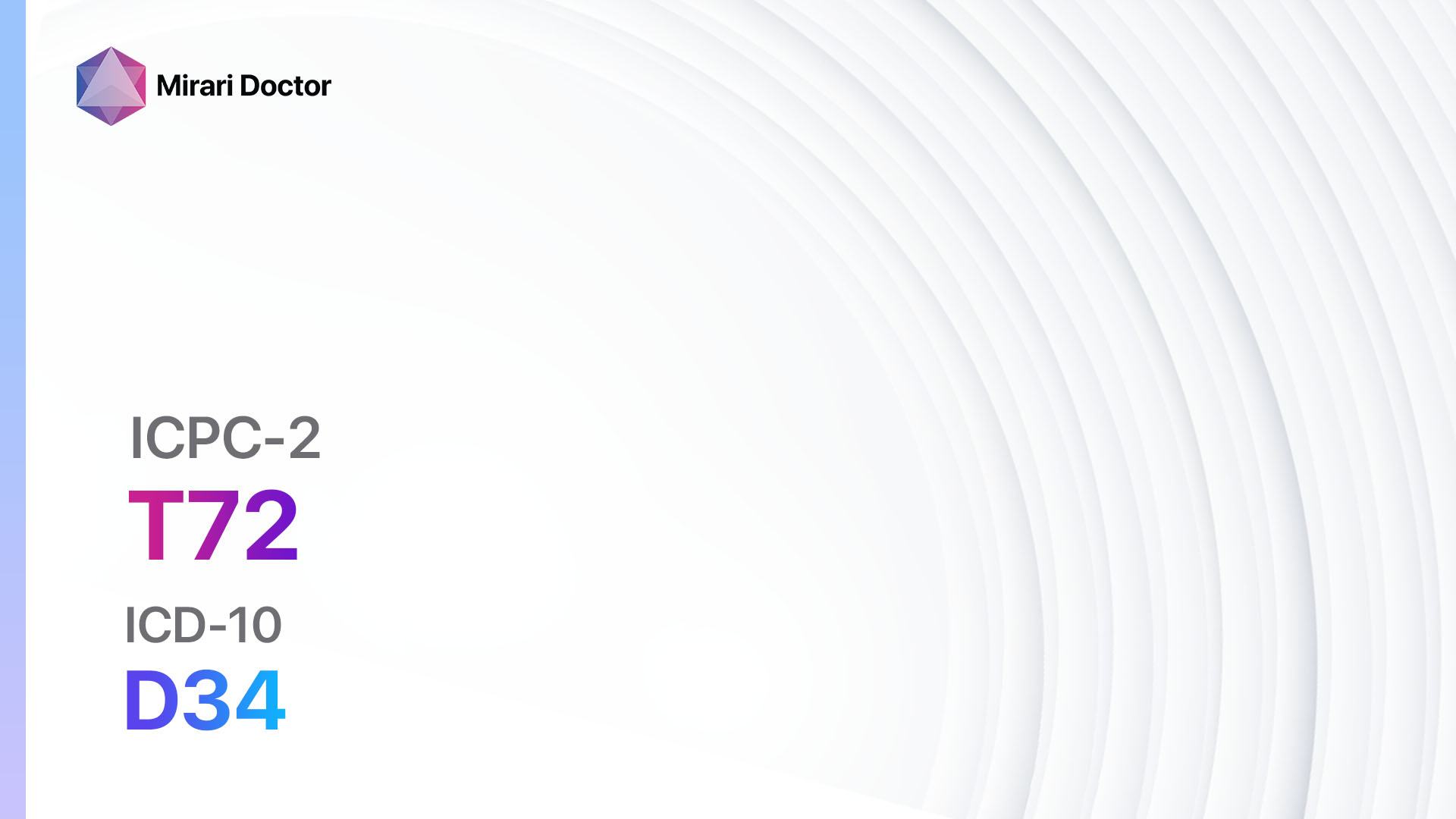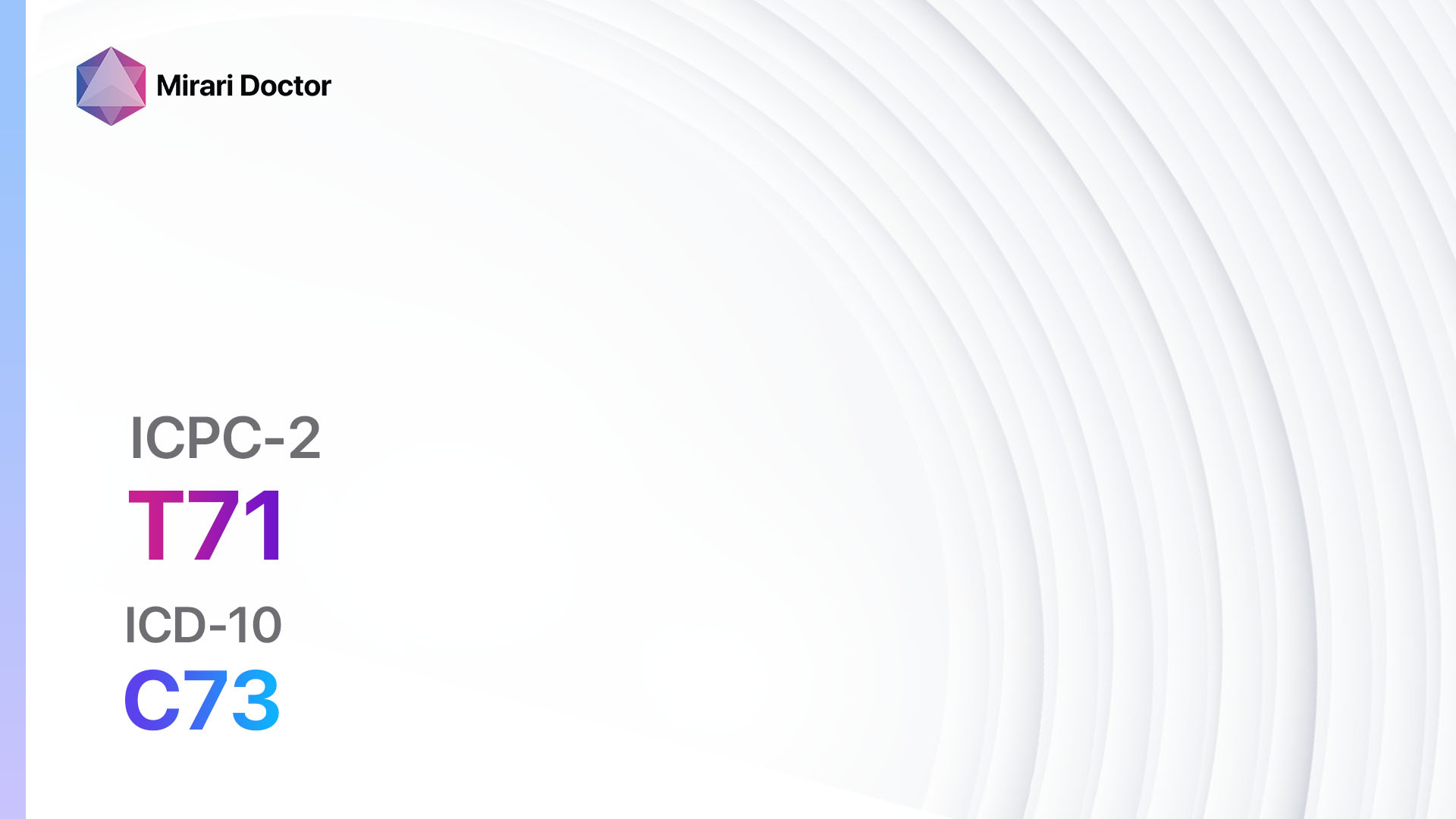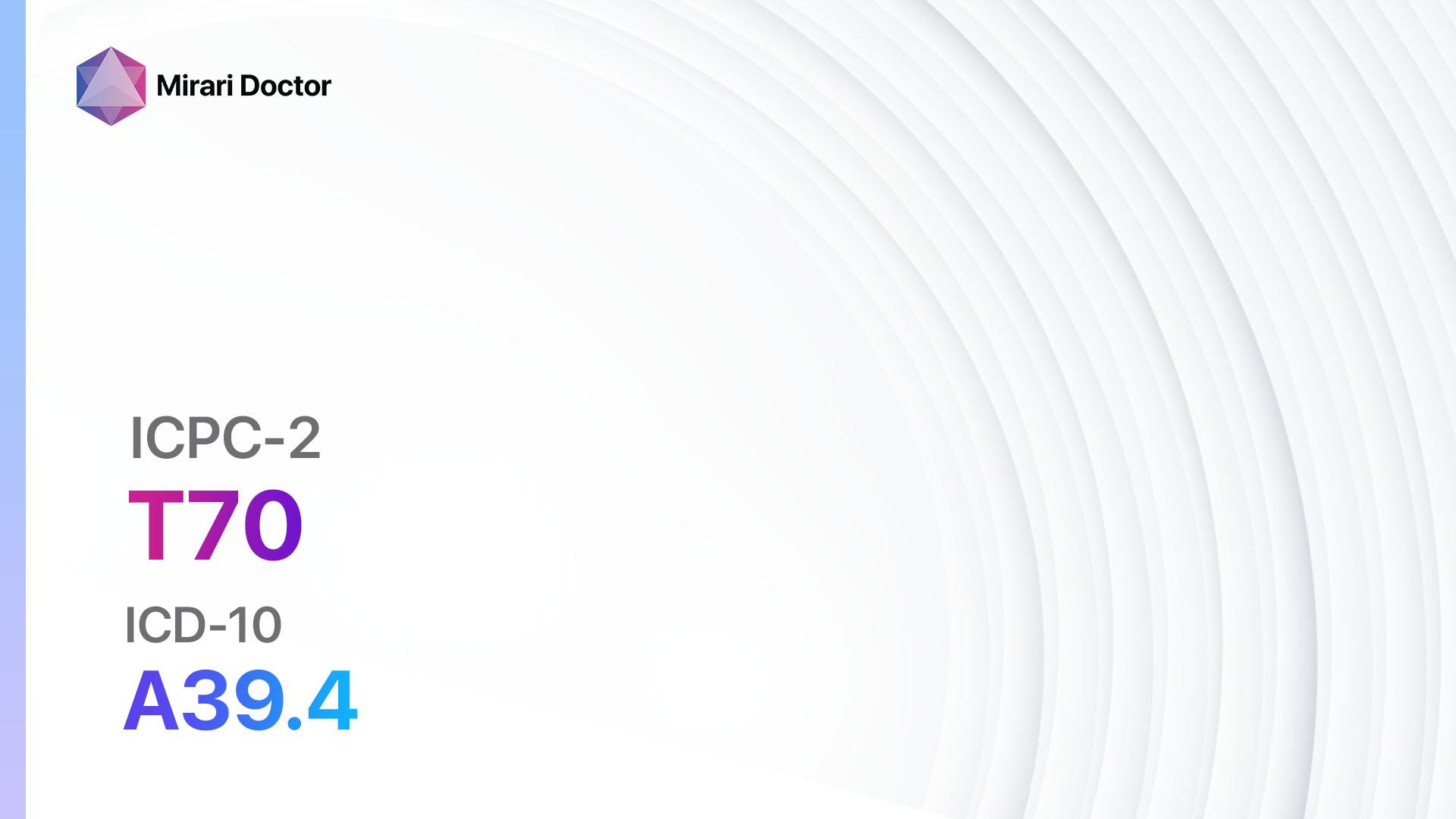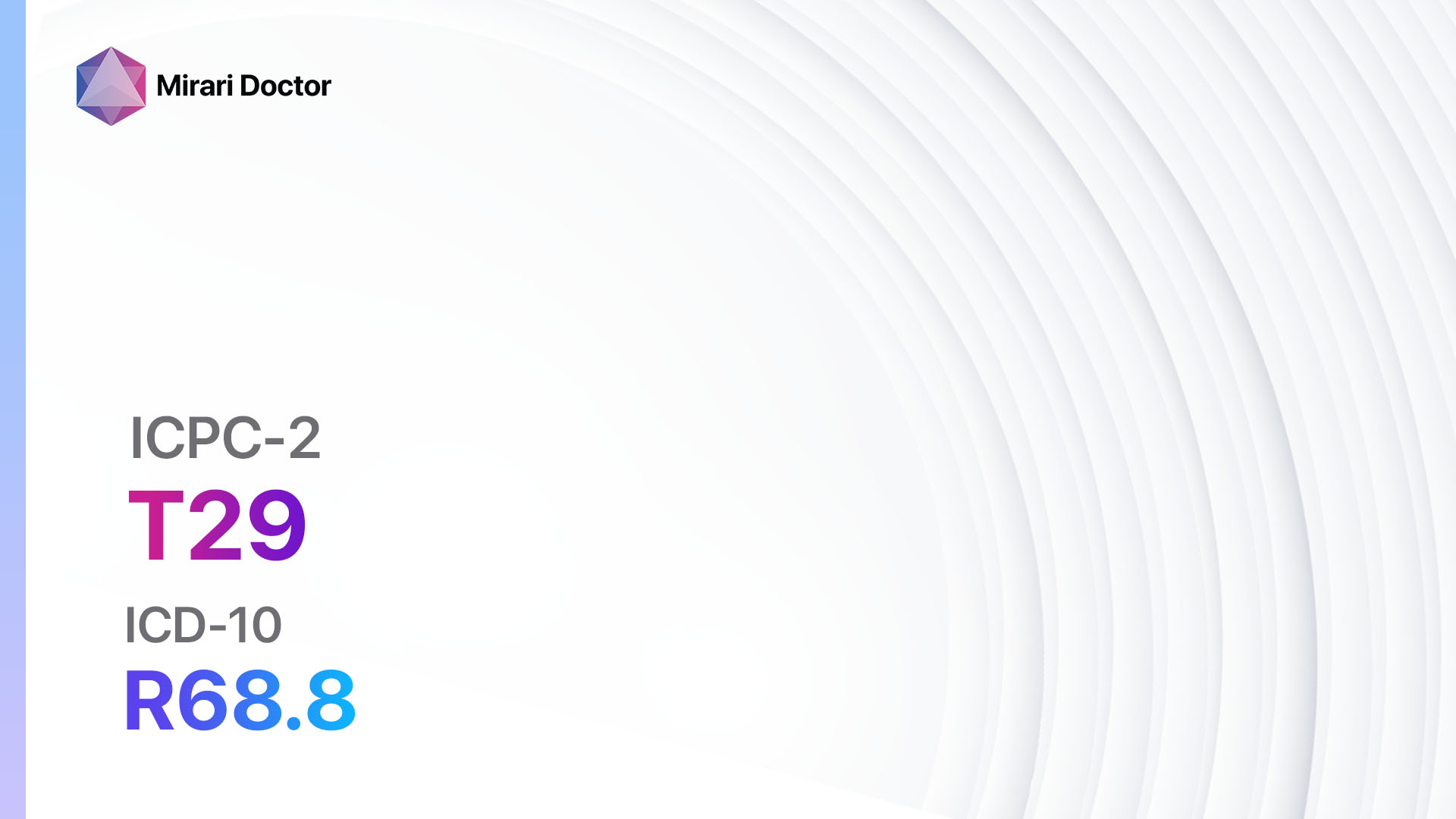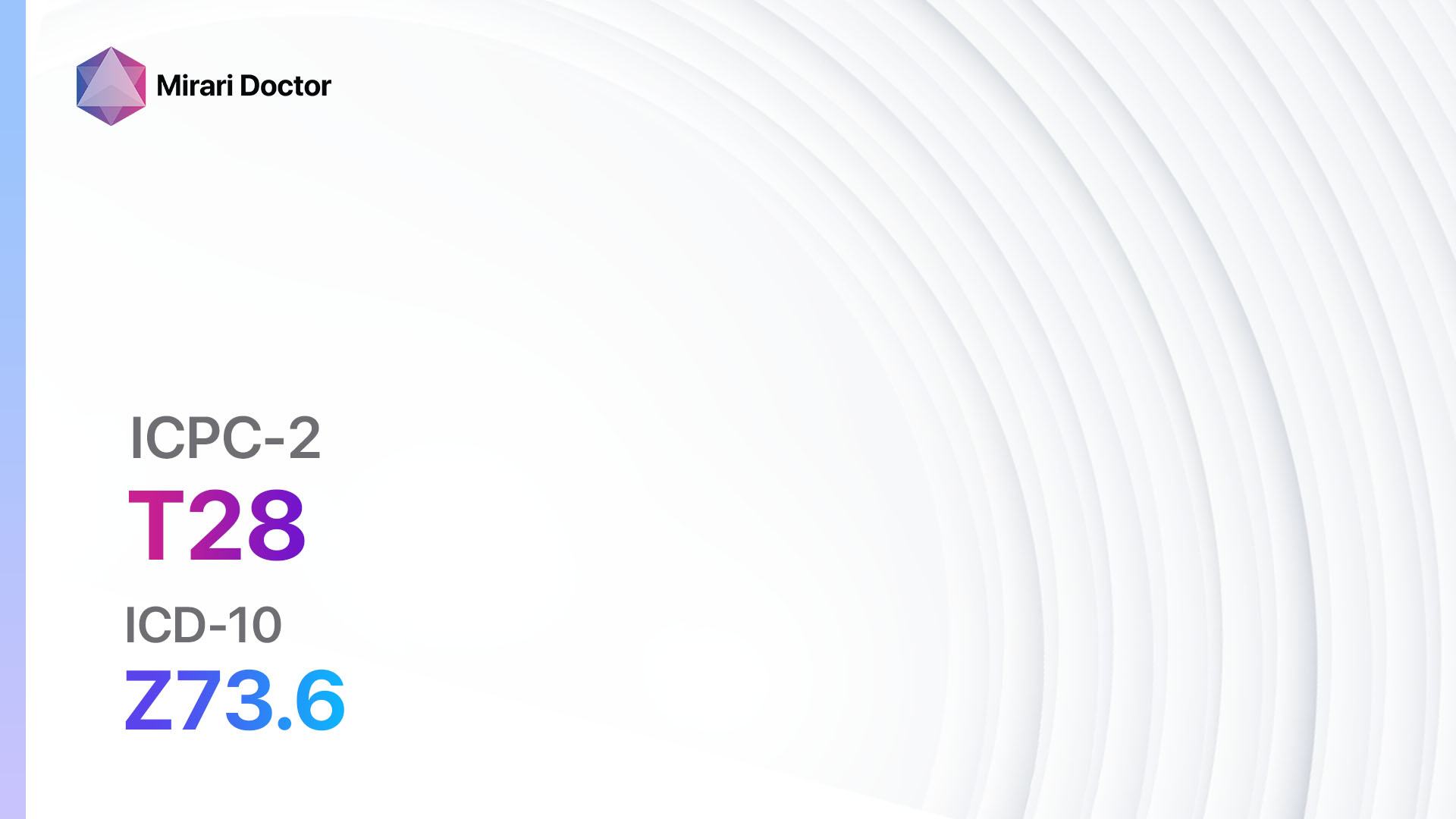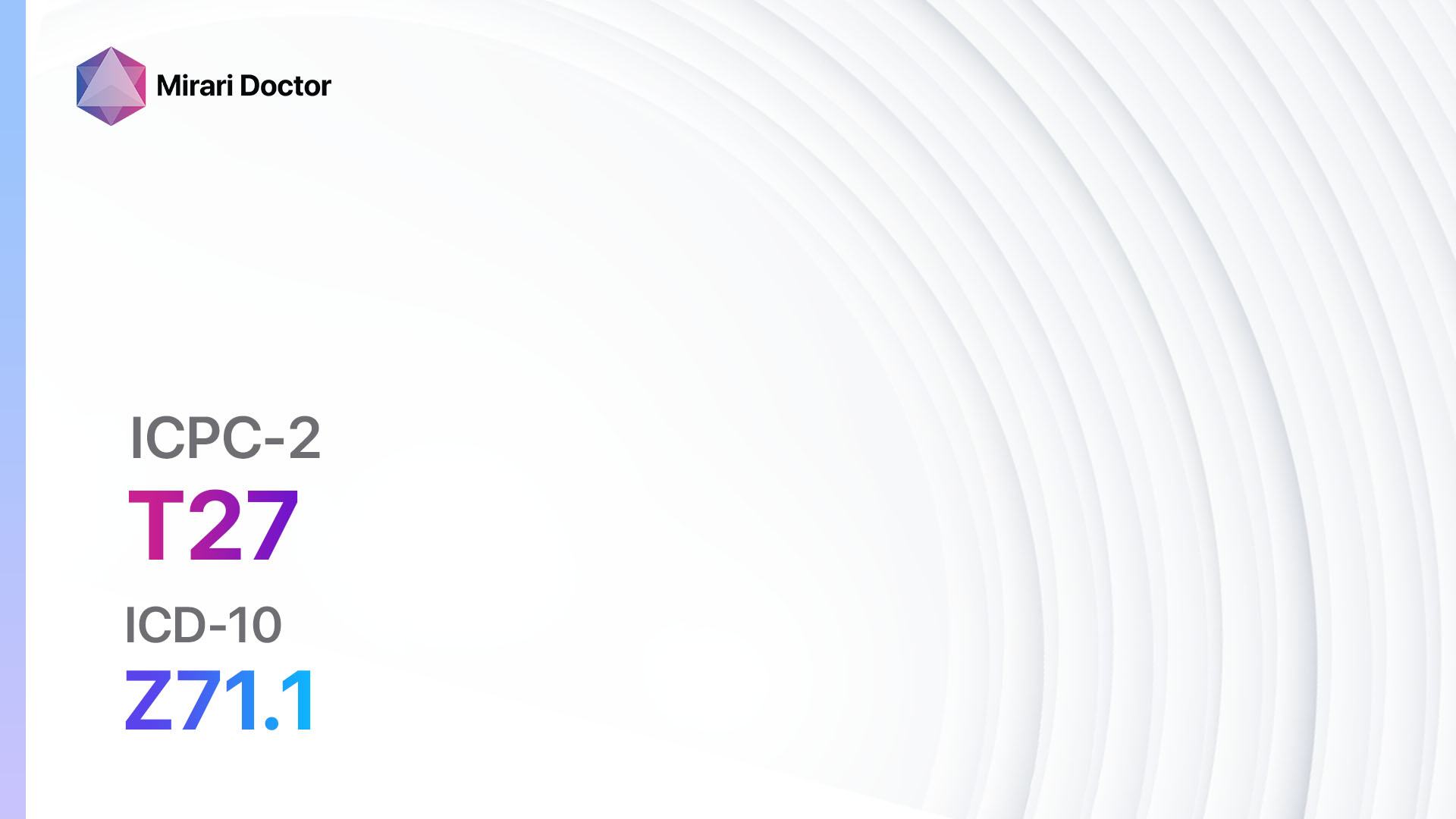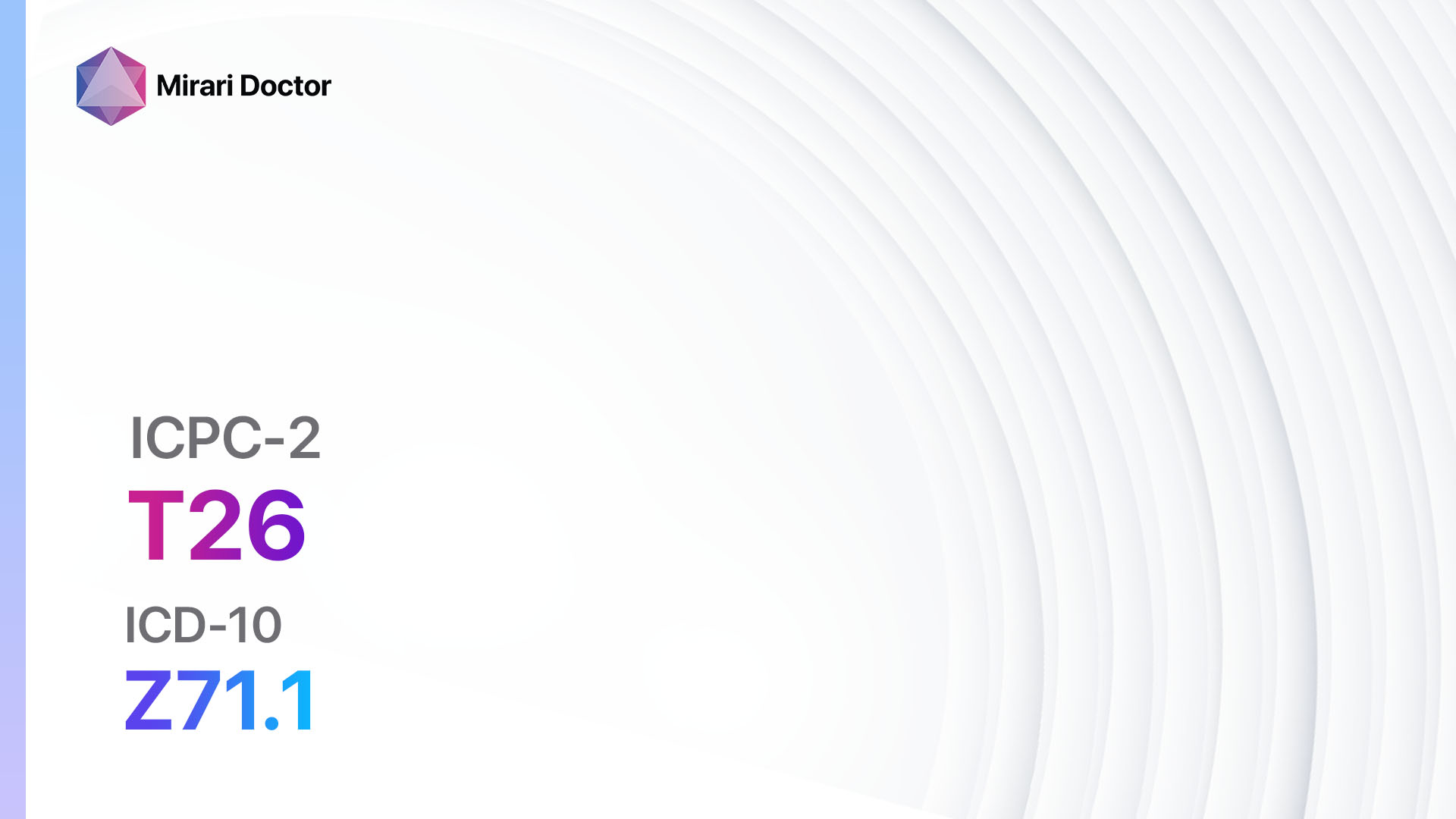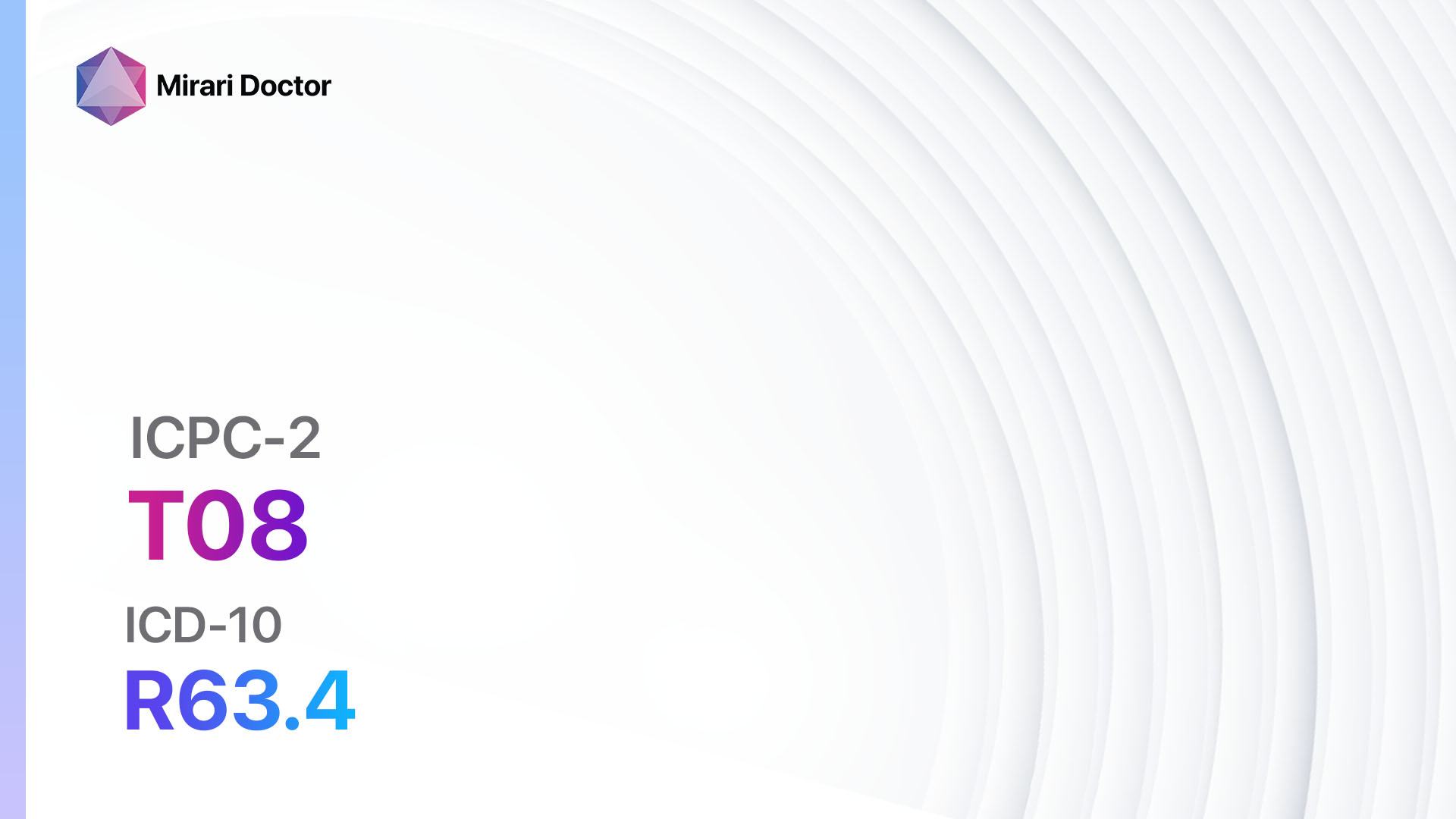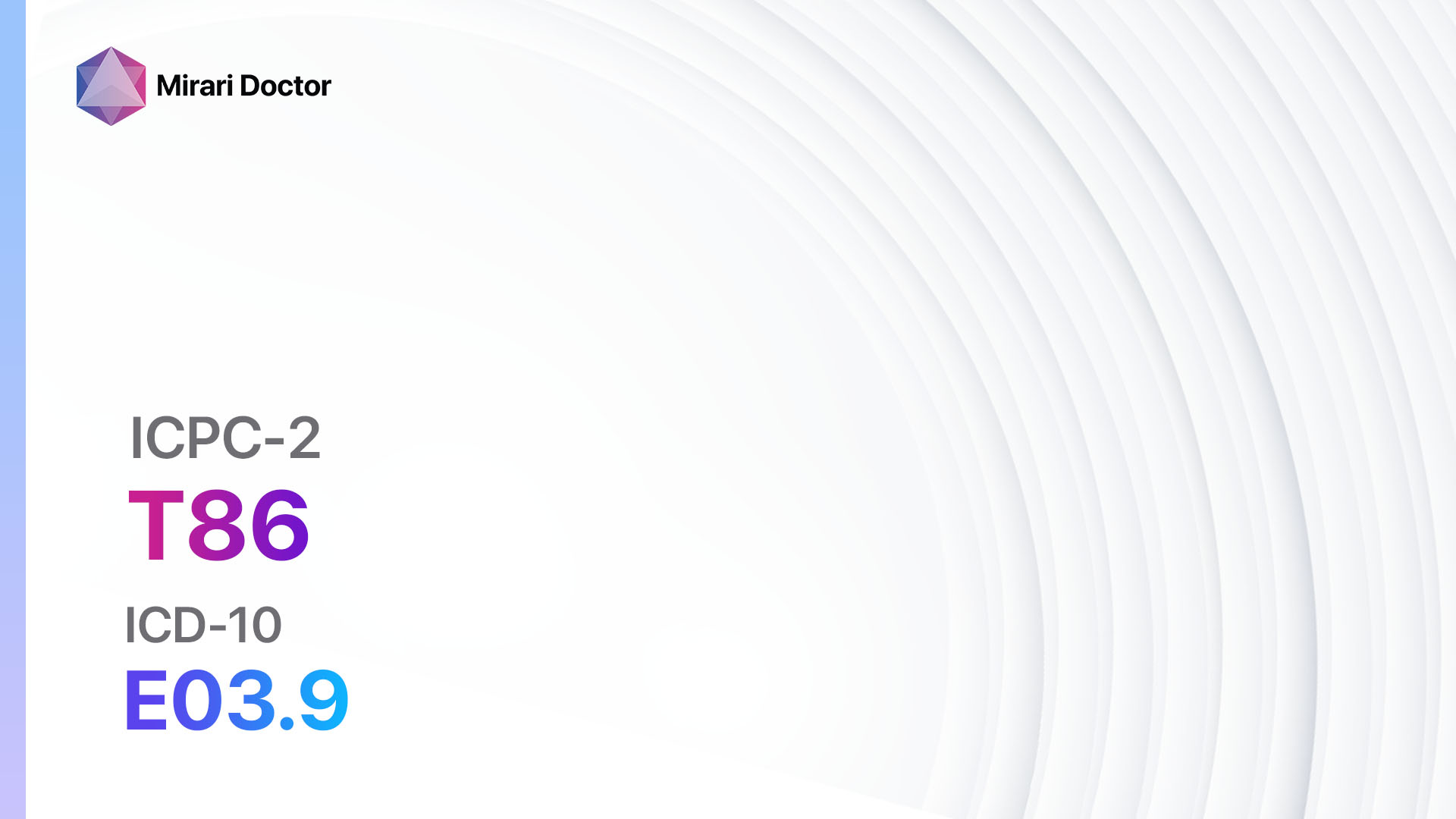
Introduction
Hypothyroidism, also known as myxoedema, is a condition characterized by an underactive thyroid gland, leading to a decrease in the production of thyroid hormones. This condition can have significant effects on various bodily functions and can cause a range of symptoms[1]. The aim of this guide is to provide a comprehensive overview of hypothyroidism, including its symptoms, causes, diagnostic steps, possible interventions, and lifestyle modifications.
Codes
Symptoms
- Fatigue: Feeling tired and lacking energy[2].
- Weight gain: Unexplained weight gain or difficulty losing weight.
- Cold intolerance: Feeling excessively cold, especially in the extremities.
- Dry skin: Dryness and itchiness of the skin.
- Constipation: Difficulty passing stools.
- Muscle weakness: Weakness and aching in the muscles.
- Depression: Feeling sad, low, or lacking interest in activities[3].
- Memory problems: Difficulty concentrating and remembering things.
- Menstrual irregularities: Changes in menstrual cycle, such as heavier or irregular periods.
- Hoarseness: Changes in voice, such as deepening or hoarseness.
Causes
- Autoimmune disease: The most common cause of hypothyroidism is an autoimmune condition called Hashimoto’s thyroiditis, where the immune system attacks the thyroid gland[4].
- Radiation therapy: Previous radiation therapy to the neck or head can damage the thyroid gland.
- Thyroid surgery: Surgical removal of the thyroid gland can lead to hypothyroidism.
- Medications: Certain medications, such as lithium and amiodarone, can interfere with thyroid hormone production[5].
- Congenital hypothyroidism: Some infants are born with an underactive thyroid gland.
Diagnostic Steps
Medical History
- Gather information about the patient’s symptoms, including fatigue, weight gain, and cold intolerance.
- Ask about any family history of thyroid disorders or autoimmune diseases.
- Inquire about any previous radiation therapy or thyroid surgery.
- Assess the patient’s medication history, including the use of lithium or amiodarone[6].
Physical Examination
- Check for signs of dry skin, hair loss, and brittle nails.
- Assess the patient’s reflexes, as delayed reflexes can be a sign of hypothyroidism.
- Examine the thyroid gland for any enlargement or nodules.
- Observe for any swelling or puffiness around the eyes or face[7].
Laboratory Tests
- Thyroid-stimulating hormone (TSH) test: This blood test measures the level of TSH, which is elevated in hypothyroidism.
- Free thyroxine (T4) test: This blood test measures the level of T4, which is usually decreased in hypothyroidism.
- Thyroid peroxidase antibody (TPOAb) test: This blood test checks for the presence of antibodies associated with autoimmune thyroid disease[8].
Diagnostic Imaging
- Thyroid ultrasound: This imaging test uses sound waves to create images of the thyroid gland and can help identify any nodules or abnormalities.
- Thyroid scan: This imaging test involves the injection of a radioactive tracer that is taken up by the thyroid gland, allowing visualization of its structure and function[9].
Other Tests
- Lipid profile: Hypothyroidism can lead to elevated cholesterol levels, so a lipid profile may be done to assess cardiovascular risk.
- Electrocardiogram (ECG): This test may be performed to evaluate the heart’s electrical activity and rule out any abnormalities[10].
Follow-up and Patient Education
- Schedule follow-up appointments to monitor thyroid hormone levels and adjust medication dosage if necessary.
- Educate the patient about the importance of taking thyroid medication as prescribed and the potential need for lifelong treatment.
- Provide information on the signs and symptoms of hypothyroidism and when to seek medical attention.
Possible Interventions
Traditional Interventions
Medications:
Top 5 drugs for Hypothyroidism/myxoedema:
- Levothyroxine (Synthroid, Levoxyl):
- Cost: $10-$30/month.
- Contraindications: Hypersensitivity to levothyroxine, acute myocardial infarction.
- Side effects: Headache, insomnia, weight loss.
- Severe side effects: Chest pain, rapid or irregular heartbeat.
- Drug interactions: Antacids, calcium supplements, iron supplements.
- Warning: Regular monitoring of thyroid hormone levels required.
- Liothyronine (Cytomel):
- Cost: $20-$50/month.
- Contraindications: Hyperthyroidism, adrenal insufficiency.
- Side effects: Sweating, nervousness, diarrhea.
- Severe side effects: Chest pain, rapid or irregular heartbeat.
- Drug interactions: Antidepressants, anticoagulants.
- Warning: Regular monitoring of thyroid hormone levels required.
- Desiccated thyroid (Armour Thyroid, Nature-Throid):
- Cost: $20-$50/month.
- Contraindications: Hypersensitivity to desiccated thyroid, untreated adrenal insufficiency.
- Side effects: Hair loss, weight loss, increased appetite.
- Severe side effects: Chest pain, rapid or irregular heartbeat.
- Drug interactions: Antidepressants, anticoagulants.
- Warning: Regular monitoring of thyroid hormone levels required.
- Liotrix (Thyrolar):
- Cost: $20-$50/month.
- Contraindications: Hyperthyroidism, adrenal insufficiency.
- Side effects: Sweating, nervousness, diarrhea.
- Severe side effects: Chest pain, rapid or irregular heartbeat.
- Drug interactions: Antidepressants, anticoagulants.
- Warning: Regular monitoring of thyroid hormone levels required.
- Methimazole (Tapazole):
- Cost: $10-$30/month.
- Contraindications: Hypersensitivity to methimazole, pregnancy.
- Side effects: Rash, nausea, vomiting.
- Severe side effects: Severe liver injury, agranulocytosis.
- Drug interactions: Warfarin, beta-blockers.
- Warning: Regular monitoring of thyroid hormone levels required.
Alternative Drugs:
- Propylthiouracil (PTU): An alternative to methimazole for the treatment of hyperthyroidism.
- Radioactive iodine: A treatment option for hyperthyroidism that involves the use of radioactive iodine to destroy thyroid cells.
- Beta-blockers (e.g., Propranolol): Used to manage symptoms such as rapid heartbeat and tremors in hyperthyroidism.
Surgical Procedures:
- Thyroidectomy: Surgical removal of all or part of the thyroid gland. Cost: $10,000 to $30,000.
- Radioactive iodine ablation: Administration of radioactive iodine to destroy thyroid cells. Cost: $5,000 to $15,000.
Alternative Interventions
- Acupuncture: May help alleviate symptoms such as fatigue and depression. Cost: $60-$120 per session.
- Yoga and meditation: Can help reduce stress and improve overall well-being. Cost: Varies depending on the location and instructor.
- Herbal supplements: Certain herbs, such as ashwagandha and guggul, may have potential benefits for thyroid function. Cost: Varies depending on the specific supplement.
- Dietary modifications: A diet rich in iodine, selenium, and zinc may support thyroid health. Cost: Varies depending on food choices and dietary preferences.
- Stress management techniques: Stress reduction techniques, such as deep breathing exercises and mindfulness, may help improve symptoms. Cost: Varies depending on the method chosen.
Lifestyle Interventions
- Regular exercise: Engaging in physical activity can help boost metabolism and improve overall well-being. Cost: Varies depending on the chosen activity (e.g., gym membership, home workout equipment).
- Healthy diet: Consuming a balanced diet that includes whole grains, lean proteins, fruits, and vegetables can support overall health. Cost: Varies depending on food choices and dietary preferences.
- Sufficient sleep: Getting an adequate amount of sleep each night is important for overall health and well-being. Cost: None.
- Stress management: Engaging in stress-reducing activities, such as meditation or hobbies, can help improve symptoms. Cost: Varies depending on the chosen activity.
- Avoidance of smoking and excessive alcohol consumption: These habits can have negative effects on overall health and thyroid function. Cost: None.
It is important to note that the cost ranges provided are approximate and may vary depending on the location and availability of the interventions. It is recommended to consult with a healthcare professional for personalized treatment options and cost estimates.
Mirari Cold Plasma Alternative Intervention
Understanding Mirari Cold Plasma
- Safe and Non-Invasive Treatment: Mirari Cold Plasma is a safe and non-invasive treatment option for various skin conditions. It does not require incisions, minimizing the risk of scarring, bleeding, or tissue damage.
- Efficient Extraction of Foreign Bodies: Mirari Cold Plasma facilitates the removal of foreign bodies from the skin by degrading and dissociating organic matter, allowing easier access and extraction.
- Pain Reduction and Comfort: Mirari Cold Plasma has a local analgesic effect, providing pain relief during the treatment, making it more comfortable for the patient.
- Reduced Risk of Infection: Mirari Cold Plasma has antimicrobial properties, effectively killing bacteria and reducing the risk of infection.
- Accelerated Healing and Minimal Scarring: Mirari Cold Plasma stimulates wound healing and tissue regeneration, reducing healing time and minimizing the formation of scars.
Mirari Cold Plasma Prescription
Video instructions for using Mirari Cold Plasma Device – T86 Hypothyroidism/myxoedema (ICD-10:E03.9)
| Mild | Moderate | Severe |
| Mode setting: 4 (Diabetes Therapy) Location: 6 (Throat, Lymphatic & Thyroid) Morning: 15 minutes, Evening: 15 minutes |
Mode setting: 4 (Diabetes Therapy) Location: 6 (Throat, Lymphatic & Thyroid) Morning: 30 minutes, Lunch: 30 minutes, Evening: 30 minutes |
Mode setting: 4 (Diabetes Therapy) Location: 6 (Throat, Lymphatic & Thyroid) Morning: 30 minutes, Lunch: 30 minutes, Evening: 30 minutes |
| Mode setting: 2 (Wound Healing) Location: 6 (Throat, Lymphatic & Thyroid) Morning: 15 minutes, Evening: 15 minutes |
Mode setting: 2 (Wound Healing) Location: 6 (Throat, Lymphatic & Thyroid) Morning: 30 minutes, Lunch: 30 minutes, Evening: 30 minutes |
Mode setting: 2 (Wound Healing) Location: 6 (Throat, Lymphatic & Thyroid) Morning: 30 minutes, Lunch: 30 minutes, Evening: 30 minutes |
| Mode setting: 3 (Antiviral Therapy) Location: 6 (Throat, Lymphatic & Thyroid) Morning: 15 minutes, Evening: 15 minutes |
Mode setting: 3 (Antiviral Therapy) Location: 6 (Throat, Lymphatic & Thyroid) Morning: 30 minutes, Lunch: 30 minutes, Evening: 30 minutes |
Mode setting: 3 (Antiviral Therapy) Location: 6 (Throat, Lymphatic & Thyroid) Morning: 30 minutes, Lunch: 30 minutes, Evening: 30 minutes |
| Mode setting: 7 (Immunotherapy) Location: 1 (Sacrum) Morning: 15 minutes, Evening: 15 minutes |
Mode setting:7 (Immunotherapy) Location: 1 (Sacrum) Morning: 30 minutes, Lunch: 30 minutes, Evening: 30 minutes |
Mode setting:7 (Immunotherapy) Location: 1 (Sacrum) Morning: 30 minutes, Lunch: 30 minutes, Evening: 30 minutes |
| Total Morning: 60 minutes approx. $10 USD, Evening: 60 minutes approx. $10 USD |
Total Morning: 120 minutes approx. $20 USD, Lunch: 120 minutes approx. $20 USD, Evening: 120 minutes approx. $20 USD, |
Total Morning: 120 minutes approx. $20 USD, Lunch: 120 minutes approx. $20 USD, Evening: 120 minutes approx. $20 USD, |
| Usual treatment for 7-60 days approx. $140 USD – $1200 USD | Usual treatment for 6-8 weeks approx. $2,520 USD – $3,360 USD |
Usual treatment for 3-6 months approx. $5,400 USD – $10,800 USD
|
 |
|
Use the Mirari Cold Plasma device to treat Hypothyroidism/myxoedema effectively.
WARNING: MIRARI COLD PLASMA IS DESIGNED FOR THE HUMAN BODY WITHOUT ANY ARTIFICIAL OR THIRD PARTY PRODUCTS. USE OF OTHER PRODUCTS IN COMBINATION WITH MIRARI COLD PLASMA MAY CAUSE UNPREDICTABLE EFFECTS, HARM OR INJURY. PLEASE CONSULT A MEDICAL PROFESSIONAL BEFORE COMBINING ANY OTHER PRODUCTS WITH USE OF MIRARI.
Step 1: Cleanse the Skin
- Start by cleaning the affected area of the skin with a gentle cleanser or mild soap and water. Gently pat the area dry with a clean towel.
Step 2: Prepare the Mirari Cold Plasma device
- Ensure that the Mirari Cold Plasma device is fully charged or has fresh batteries as per the manufacturer’s instructions. Make sure the device is clean and in good working condition.
- Switch on the Mirari device using the power button or by following the specific instructions provided with the device.
- Some Mirari devices may have adjustable settings for intensity or treatment duration. Follow the manufacturer’s instructions to select the appropriate settings based on your needs and the recommended guidelines.
Step 3: Apply the Device
- Place the Mirari device in direct contact with the affected area of the skin. Gently glide or hold the device over the skin surface, ensuring even coverage of the area experiencing.
- Slowly move the Mirari device in a circular motion or follow a specific pattern as indicated in the user manual. This helps ensure thorough treatment coverage.
Step 4: Monitor and Assess:
- Keep track of your progress and evaluate the effectiveness of the Mirari device in managing your Hypothyroidism/myxoedema. If you have any concerns or notice any adverse reactions, consult with your health care professional.
Note
This guide is for informational purposes only and should not replace the advice of a medical professional. Always consult with your healthcare provider or a qualified medical professional for personal advice, diagnosis, or treatment. Do not solely rely on the information presented here for decisions about your health. Use of this information is at your own risk. The authors of this guide, nor any associated entities or platforms, are not responsible for any potential adverse effects or outcomes based on the content.
Mirari Cold Plasma System Disclaimer
- Purpose: The Mirari Cold Plasma System is a Class 2 medical device designed for use by trained healthcare professionals. It is registered for use in Thailand and Vietnam. It is not intended for use outside of these locations.
- Informational Use: The content and information provided with the device are for educational and informational purposes only. They are not a substitute for professional medical advice or care.
- Variable Outcomes: While the device is approved for specific uses, individual outcomes can differ. We do not assert or guarantee specific medical outcomes.
- Consultation: Prior to utilizing the device or making decisions based on its content, it is essential to consult with a Certified Mirari Tele-Therapist and your medical healthcare provider regarding specific protocols.
- Liability: By using this device, users are acknowledging and accepting all potential risks. Neither the manufacturer nor the distributor will be held accountable for any adverse reactions, injuries, or damages stemming from its use.
- Geographical Availability: This device has received approval for designated purposes by the Thai and Vietnam FDA. As of now, outside of Thailand and Vietnam, the Mirari Cold Plasma System is not available for purchase or use.
References
- Chaker L, Bianco AC, Jonklaas J, Peeters RP. Hypothyroidism. Lancet. 2017;390(10101):1550-1562.
- Garber JR, Cobin RH, Gharib H, et al. Clinical practice guidelines for hypothyroidism in adults: cosponsored by the American Association of Clinical Endocrinologists and the American Thyroid Association. Endocr Pract. 2012;18(6):988-1028.
- Bathla M, Singh M, Relan P. Prevalence of anxiety and depressive symptoms among patients with hypothyroidism. Indian J Endocrinol Metab. 2016;20(4):468-474.
- Caturegli P, De Remigis A, Rose NR. Hashimoto thyroiditis: clinical and diagnostic criteria. Autoimmun Rev. 2014;13(4-5):391-397.
- Lazarus JH. Lithium and thyroid. Best Pract Res Clin Endocrinol Metab. 2009;23(6):723-733.
- Biondi B, Wartofsky L. Treatment with thyroid hormone. Endocr Rev. 2014;35(3):433-512.
- Safer JD. Thyroid hormone action on skin. Dermatoendocrinol. 2011;3(3):211-215.
- Koulouri O, Moran C, Halsall D, Chatterjee K, Gurnell M. Pitfalls in the measurement and interpretation of thyroid function tests. Best Pract Res Clin Endocrinol Metab. 2013;27(6):745-762.
- Haugen BR, Alexander EK, Bible KC, et al. 2015 American Thyroid Association Management Guidelines for Adult Patients with Thyroid Nodules and Differentiated Thyroid Cancer: The American Thyroid Association Guidelines Task Force on Thyroid Nodules and Differentiated Thyroid Cancer. Thyroid. 2016;26(1):1-133.
- Klein I, Danzi S. Thyroid disease and the heart. Circulation. 2007;116(15):1725-1735.
Related articles
Made in USA


